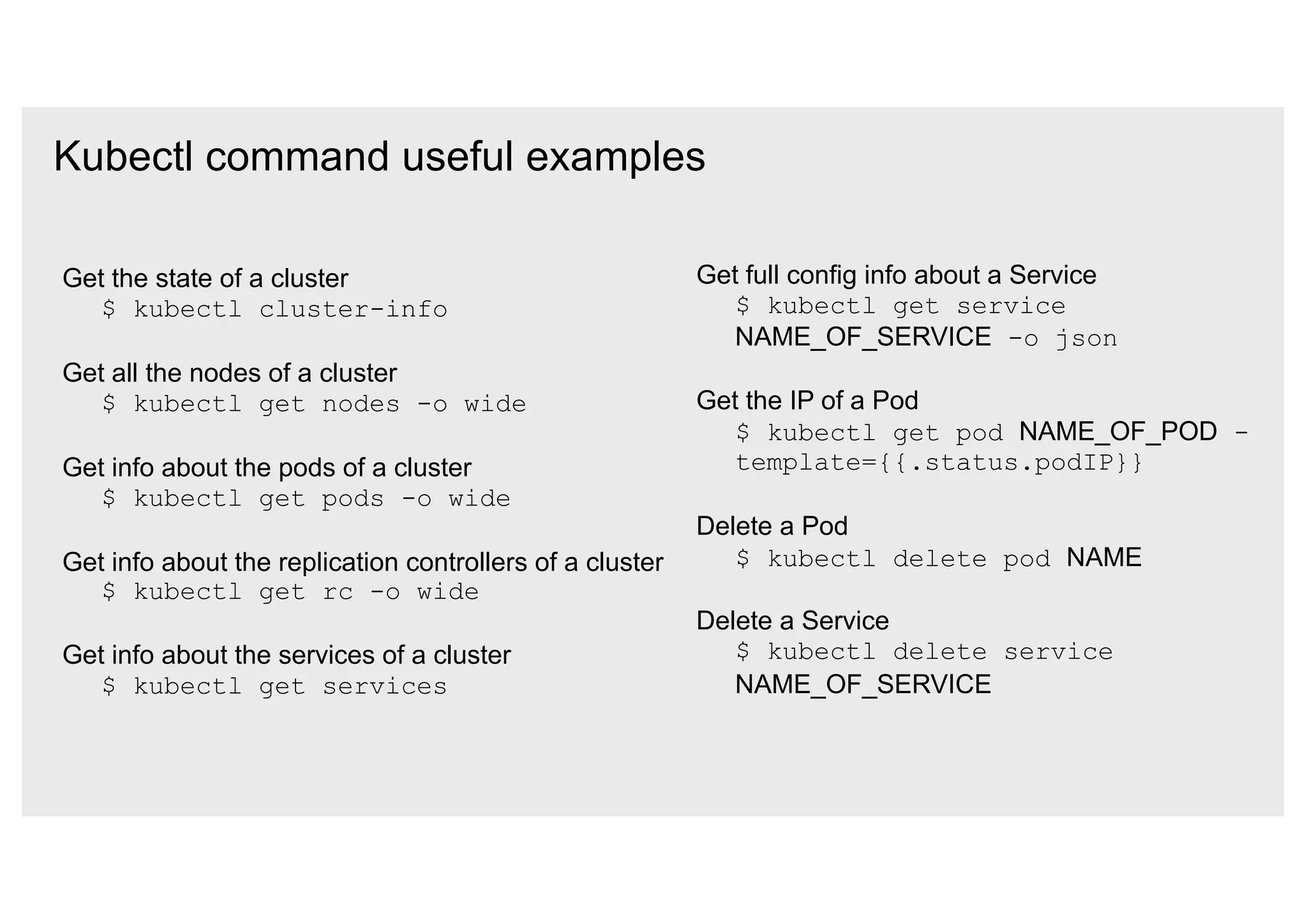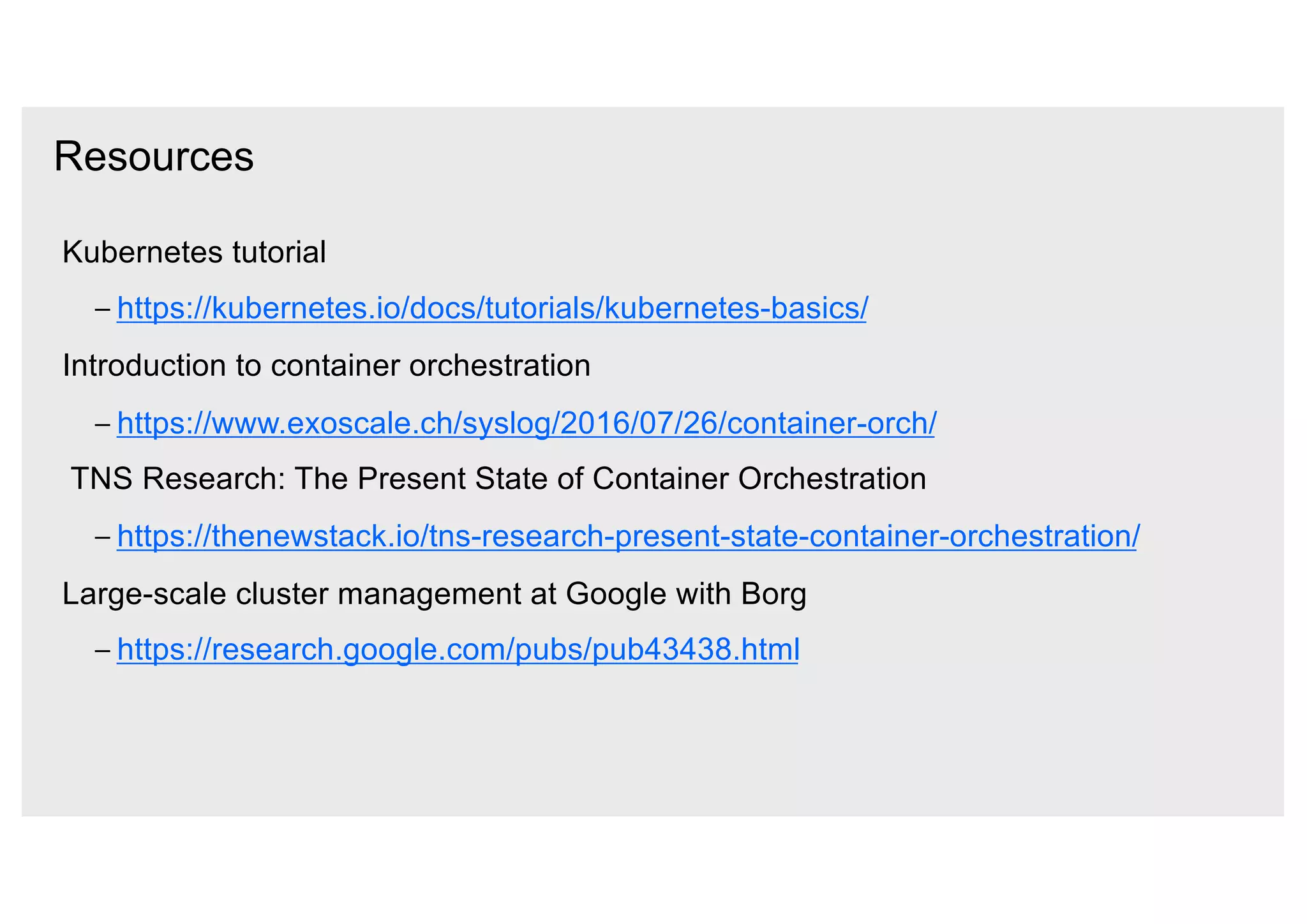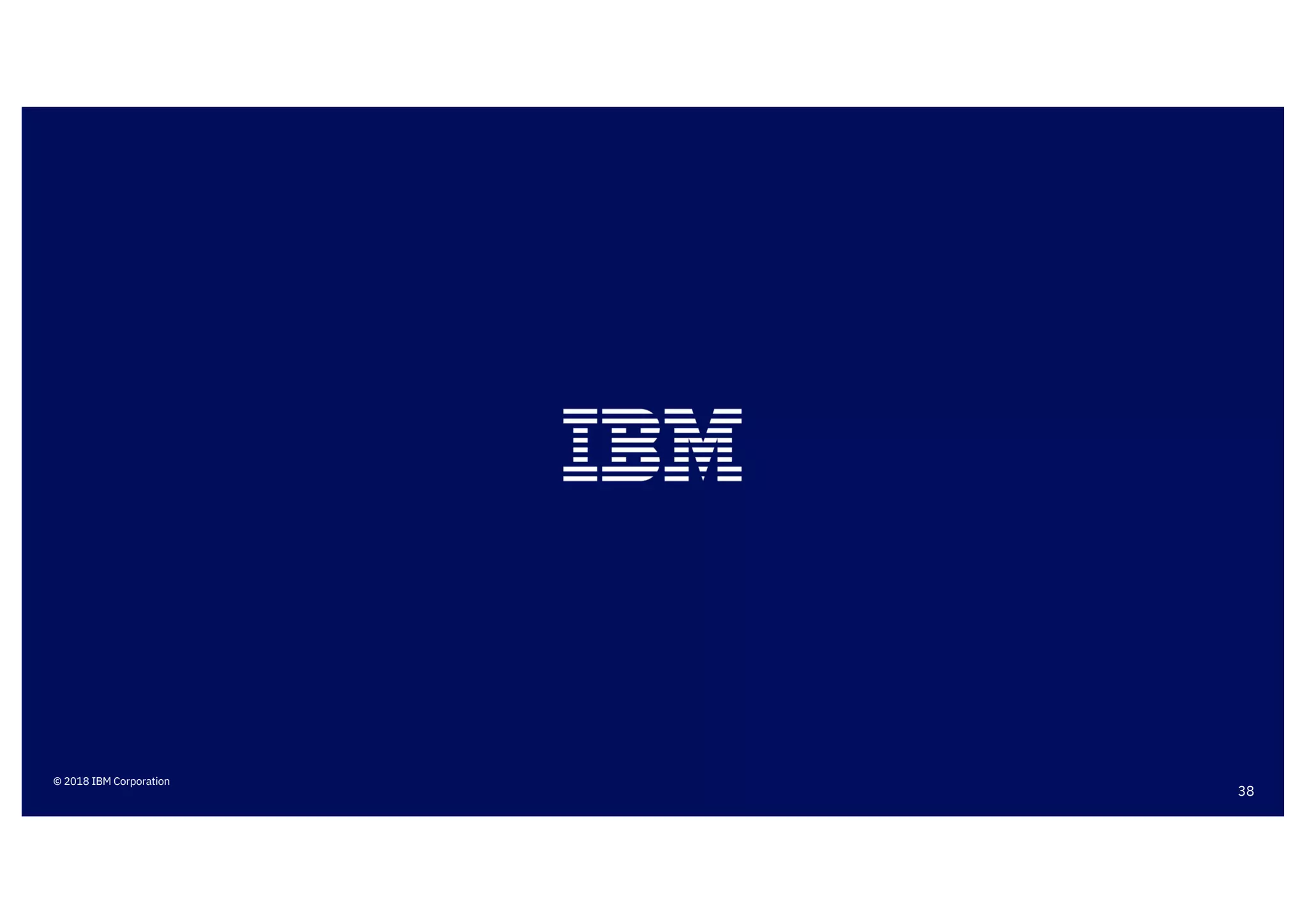Kubernetes is an open-source container orchestration system that automates deployment, scaling, and management of containerized applications. It groups containers that make up an application into logical units for easy management and discovery. Kubernetes services handle load balancing, networking, and execution of containers across a cluster of nodes. It addresses challenges in managing containers at scale through features like deployment and rolling update of containers, self-healing, resource allocation and monitoring.
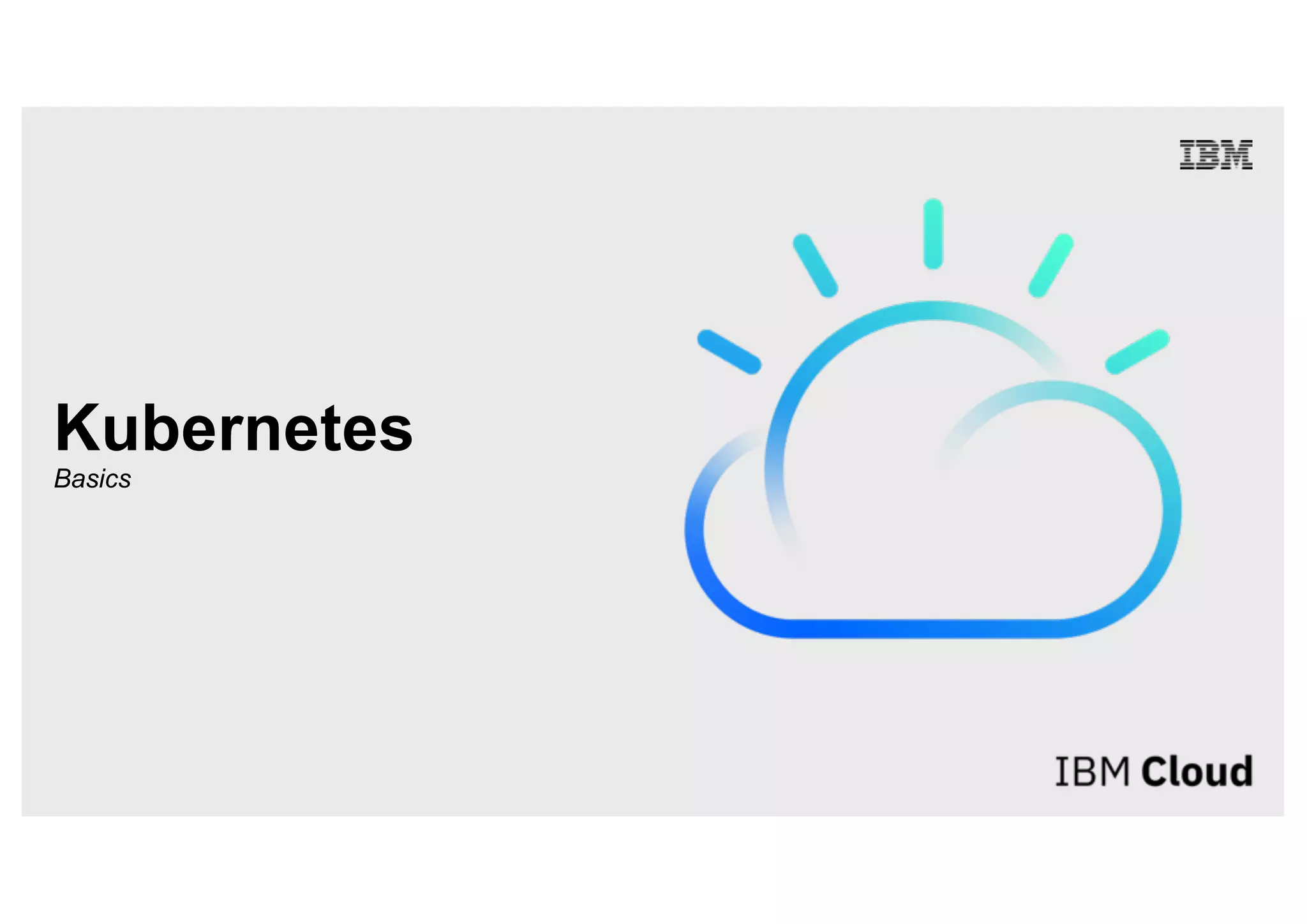
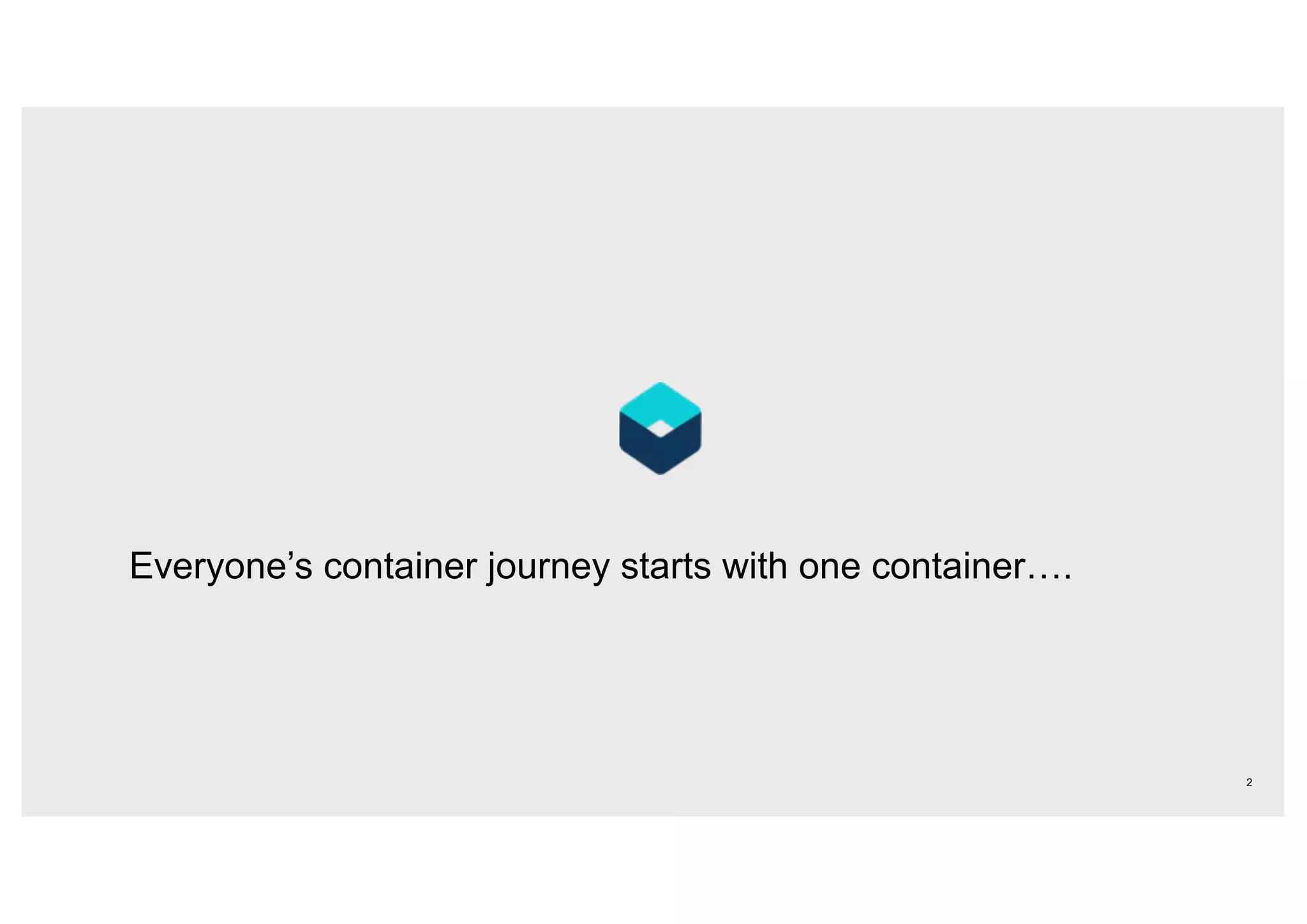
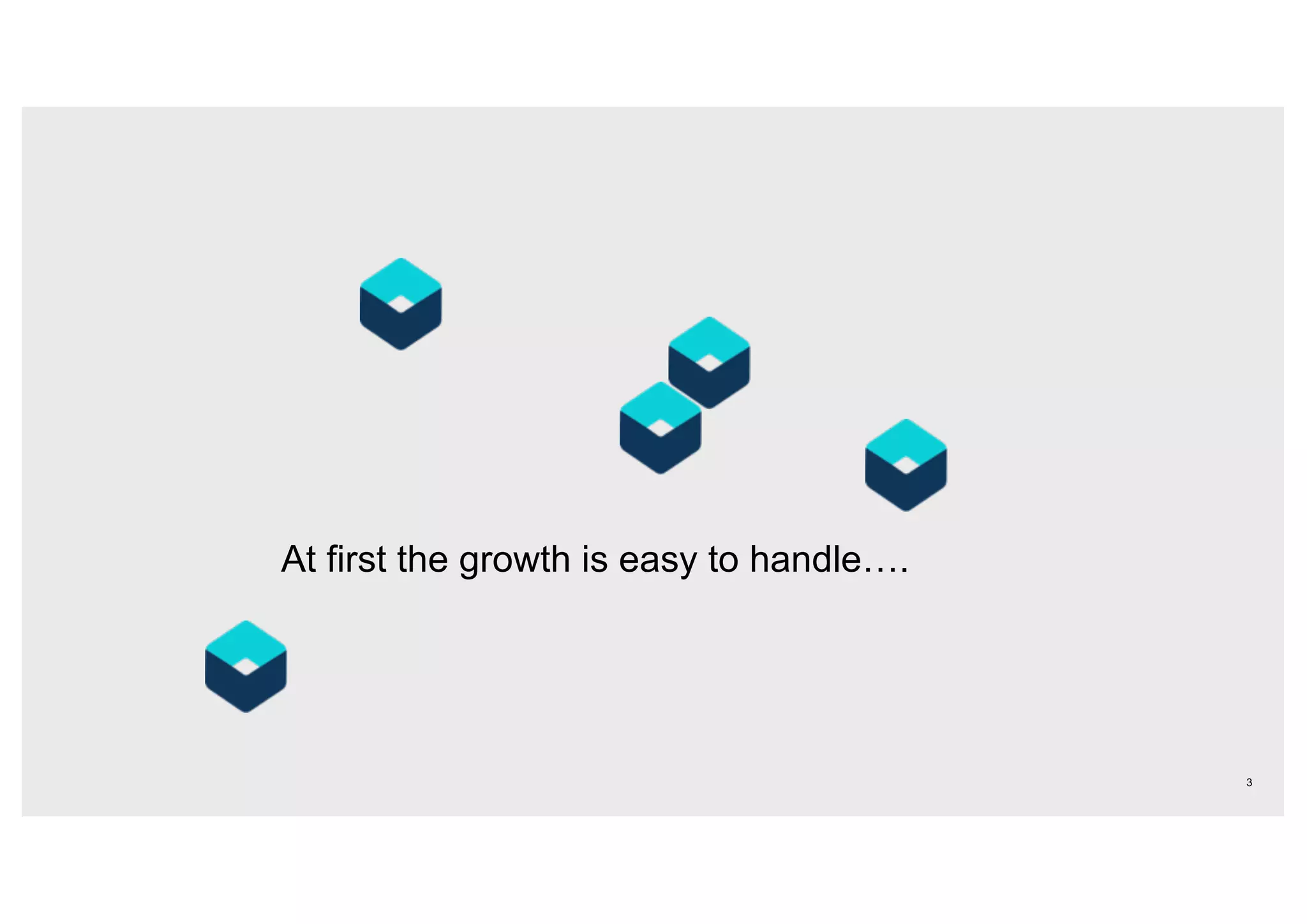

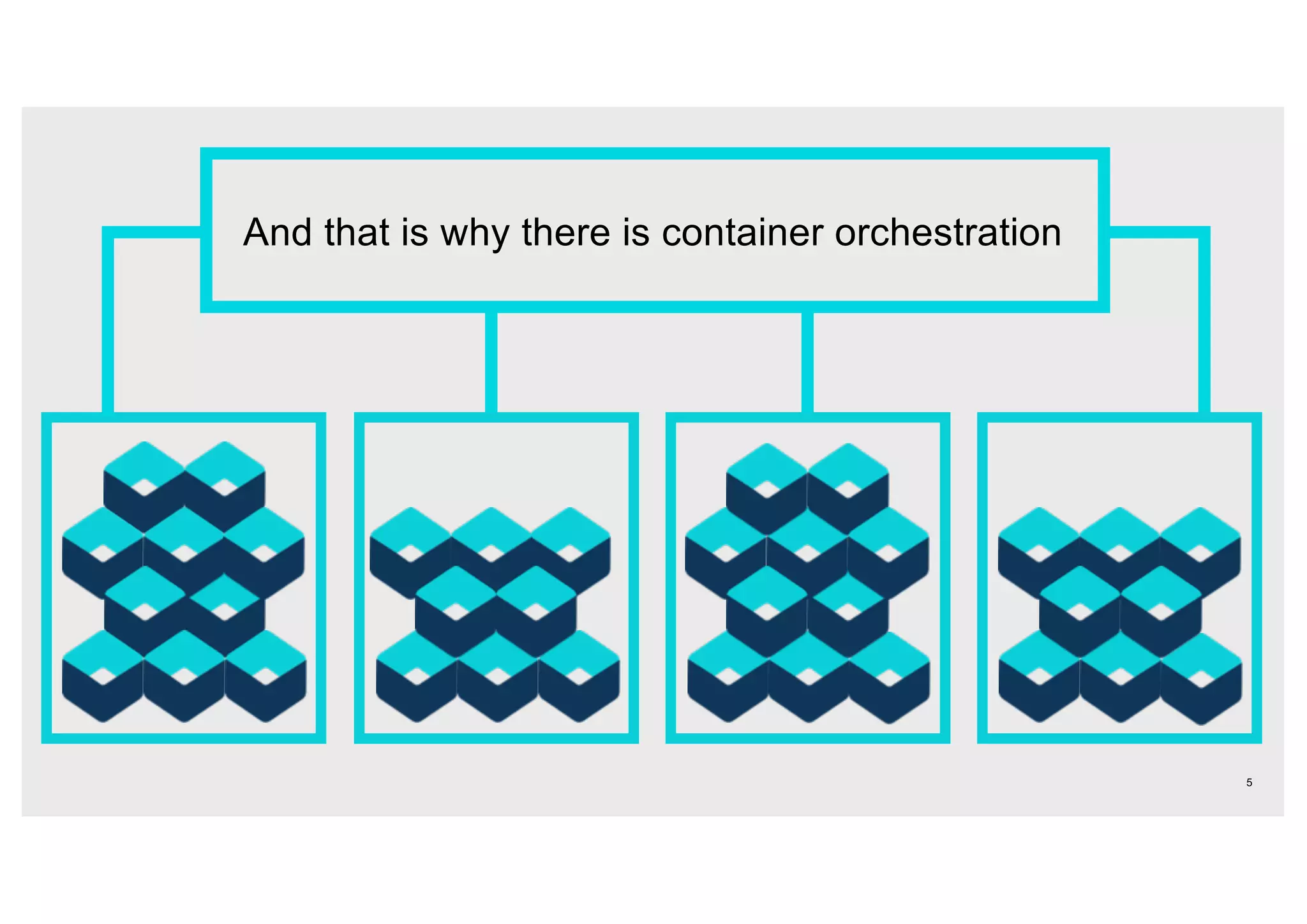
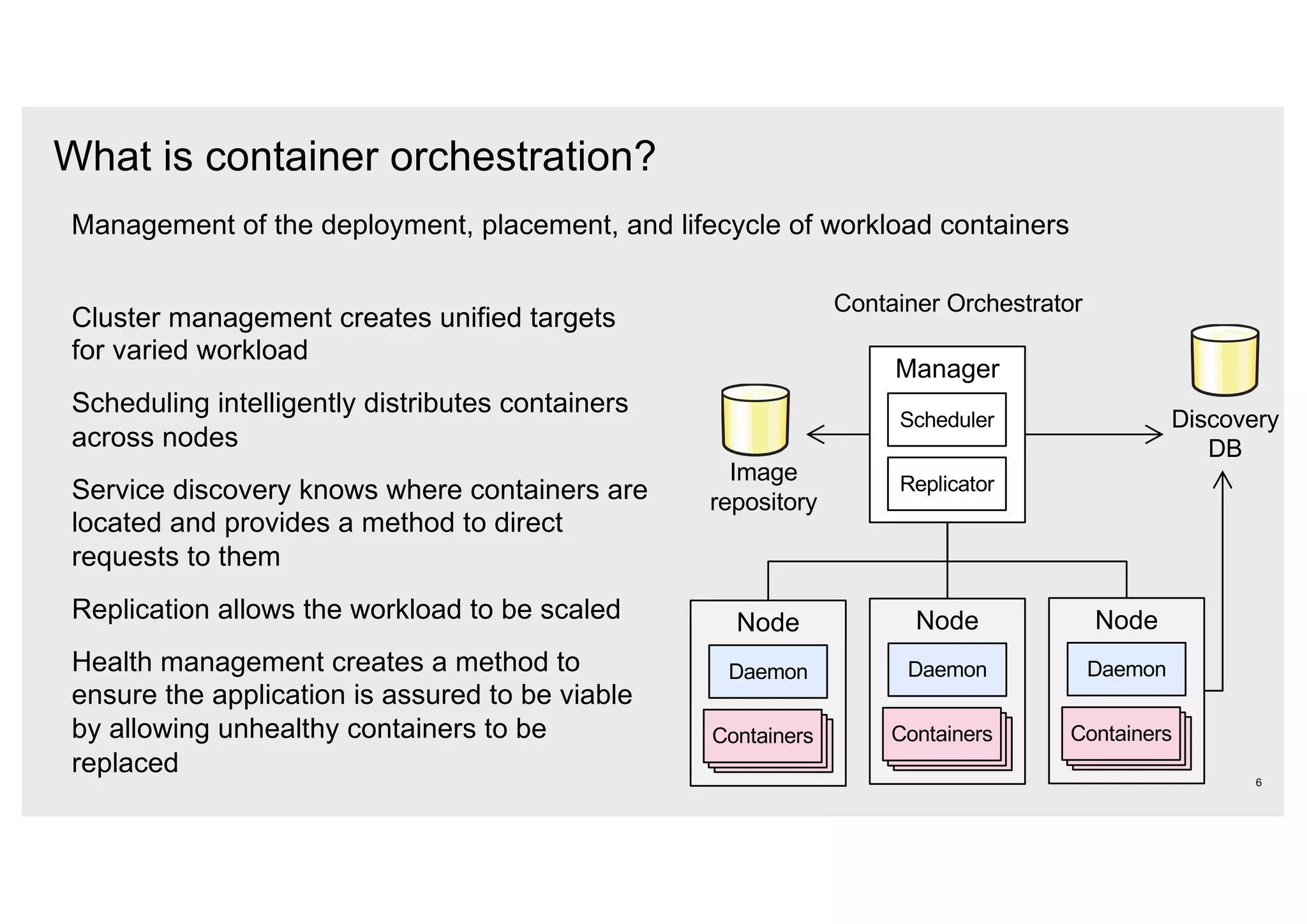





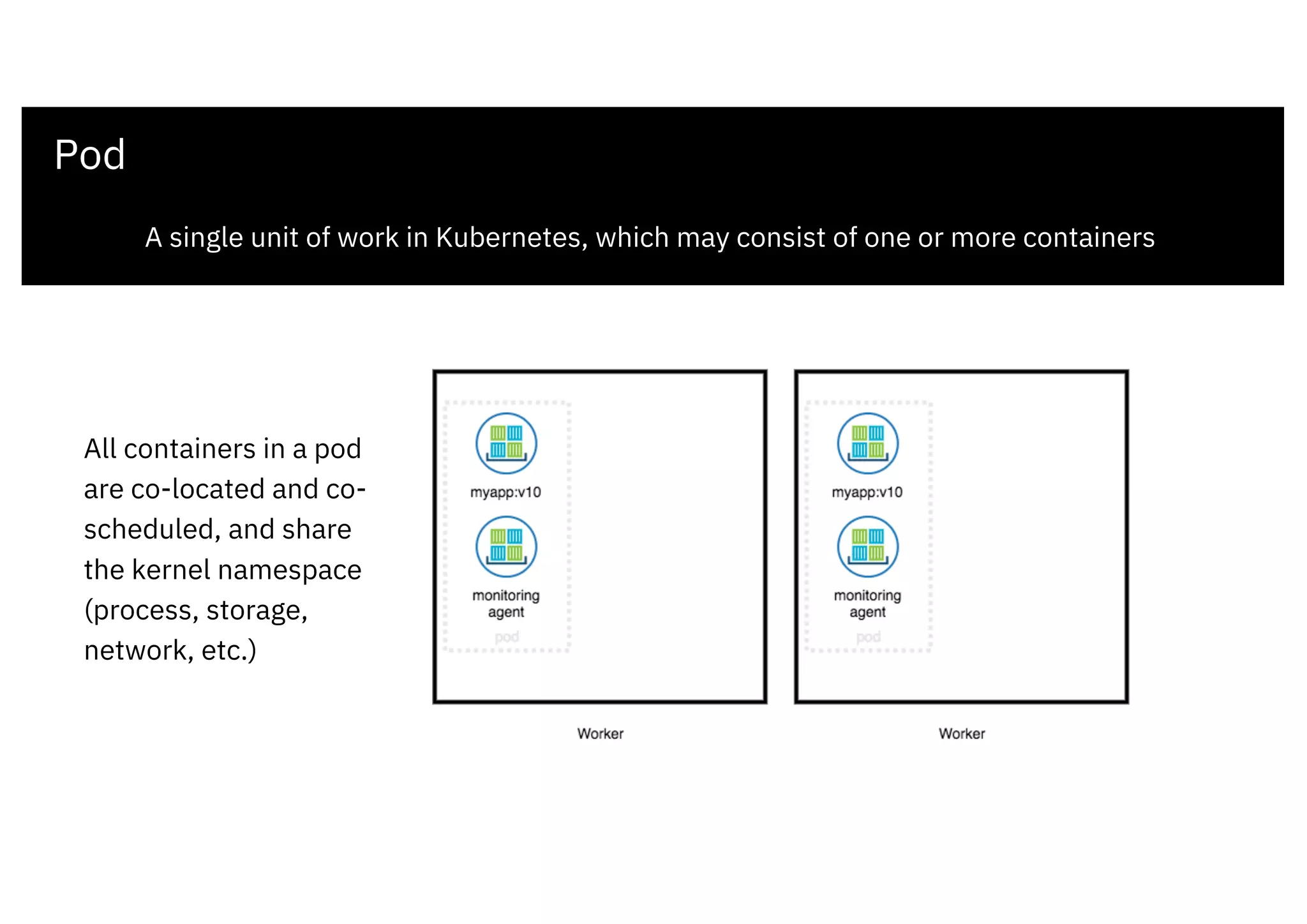
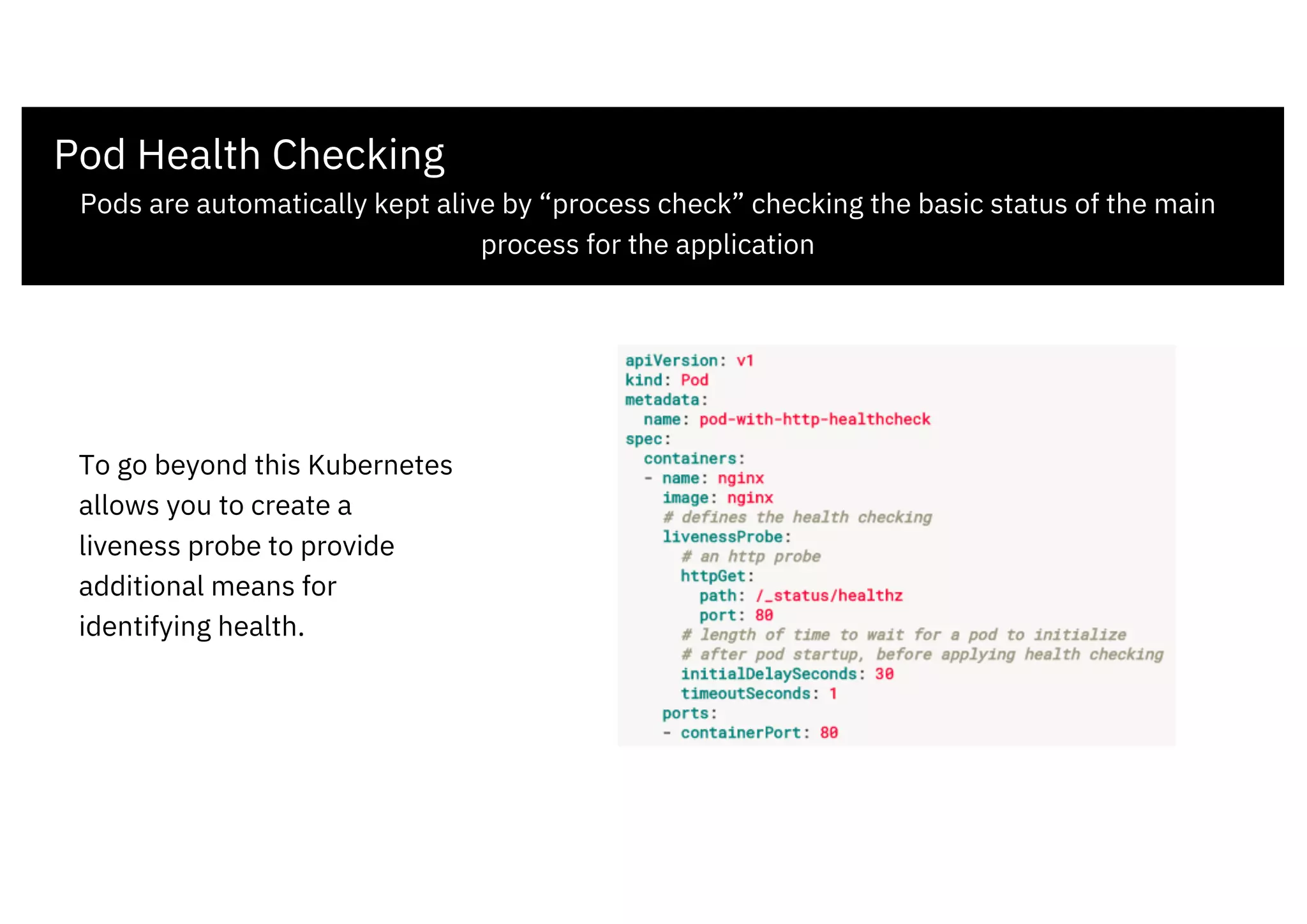


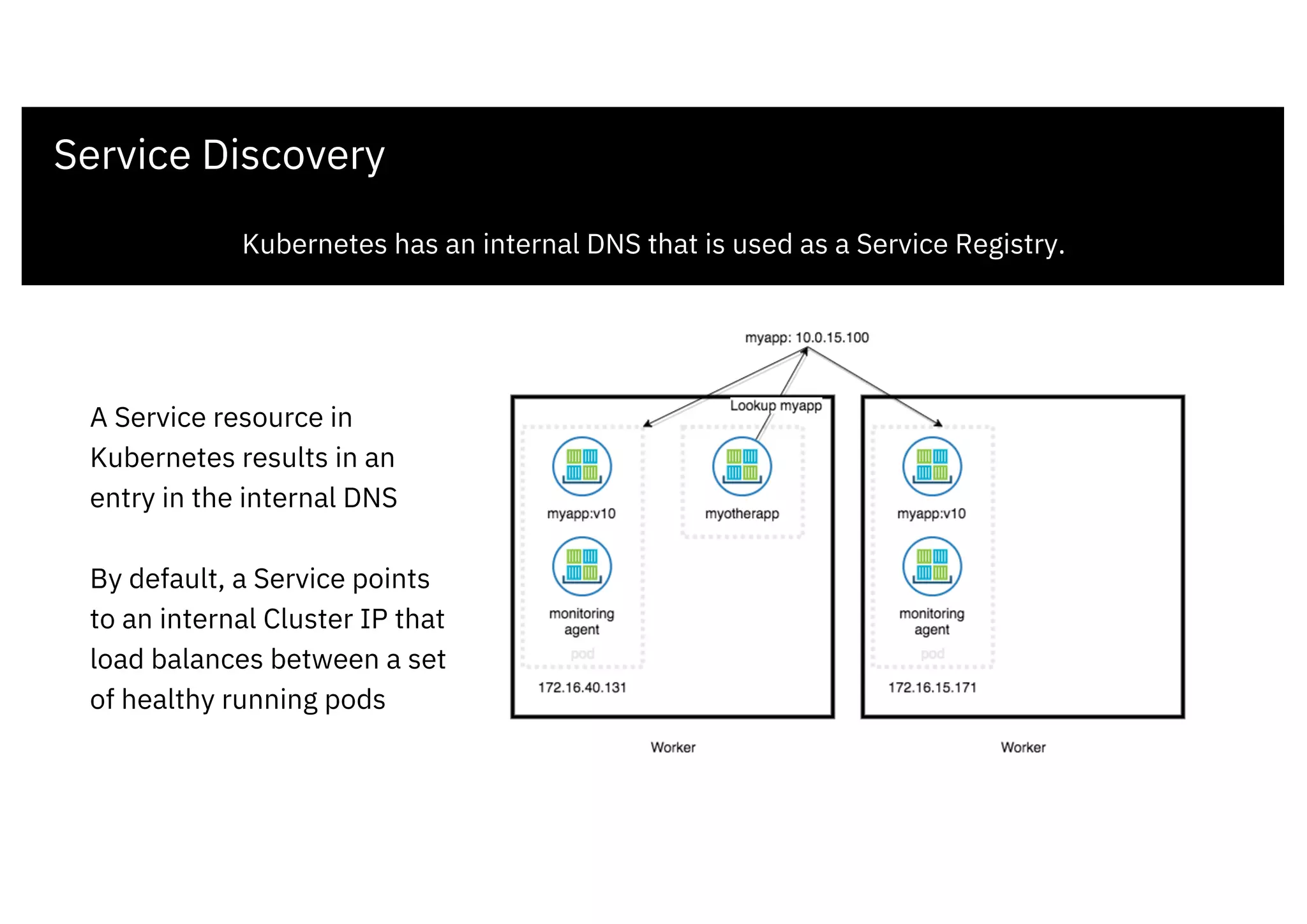
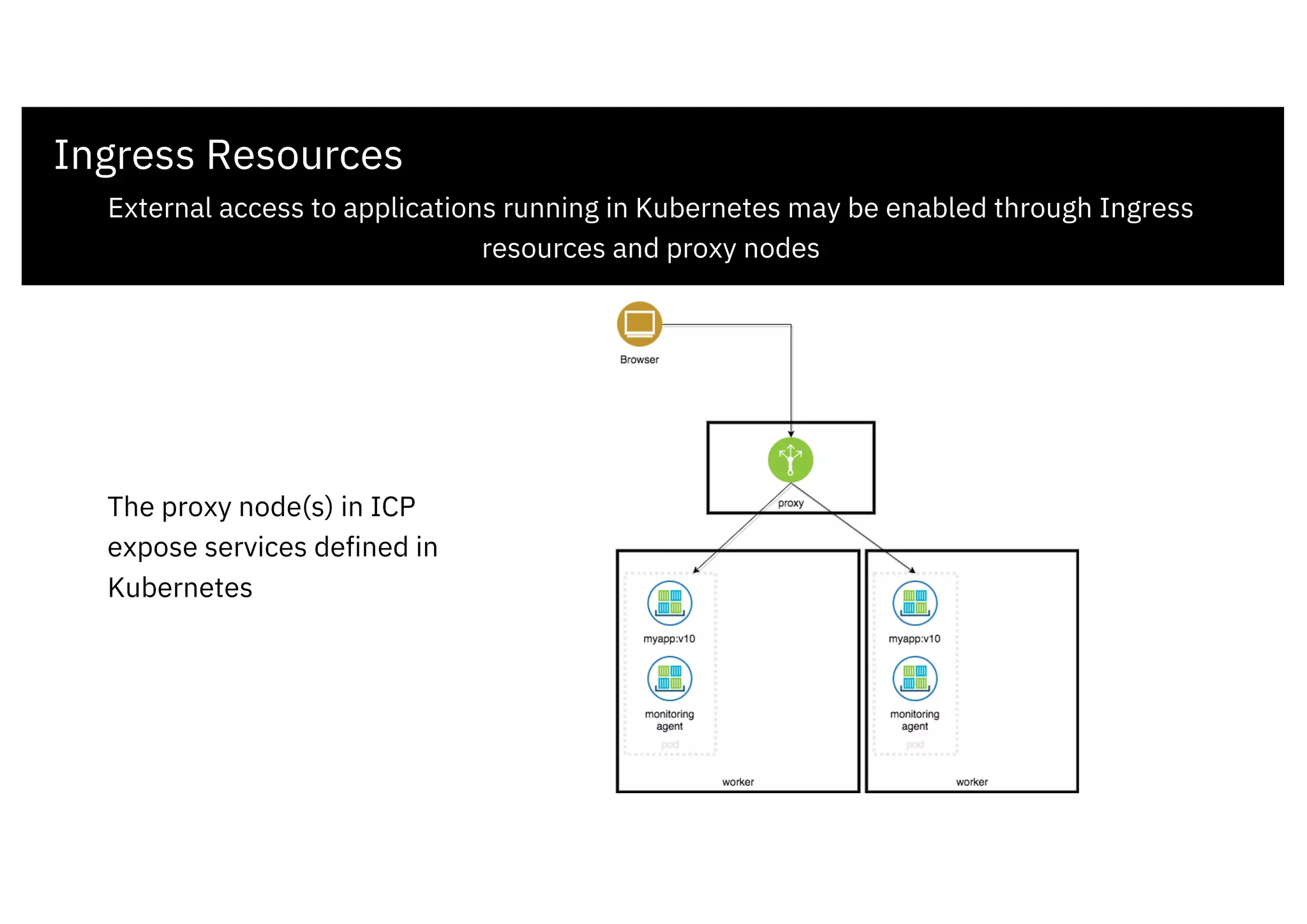


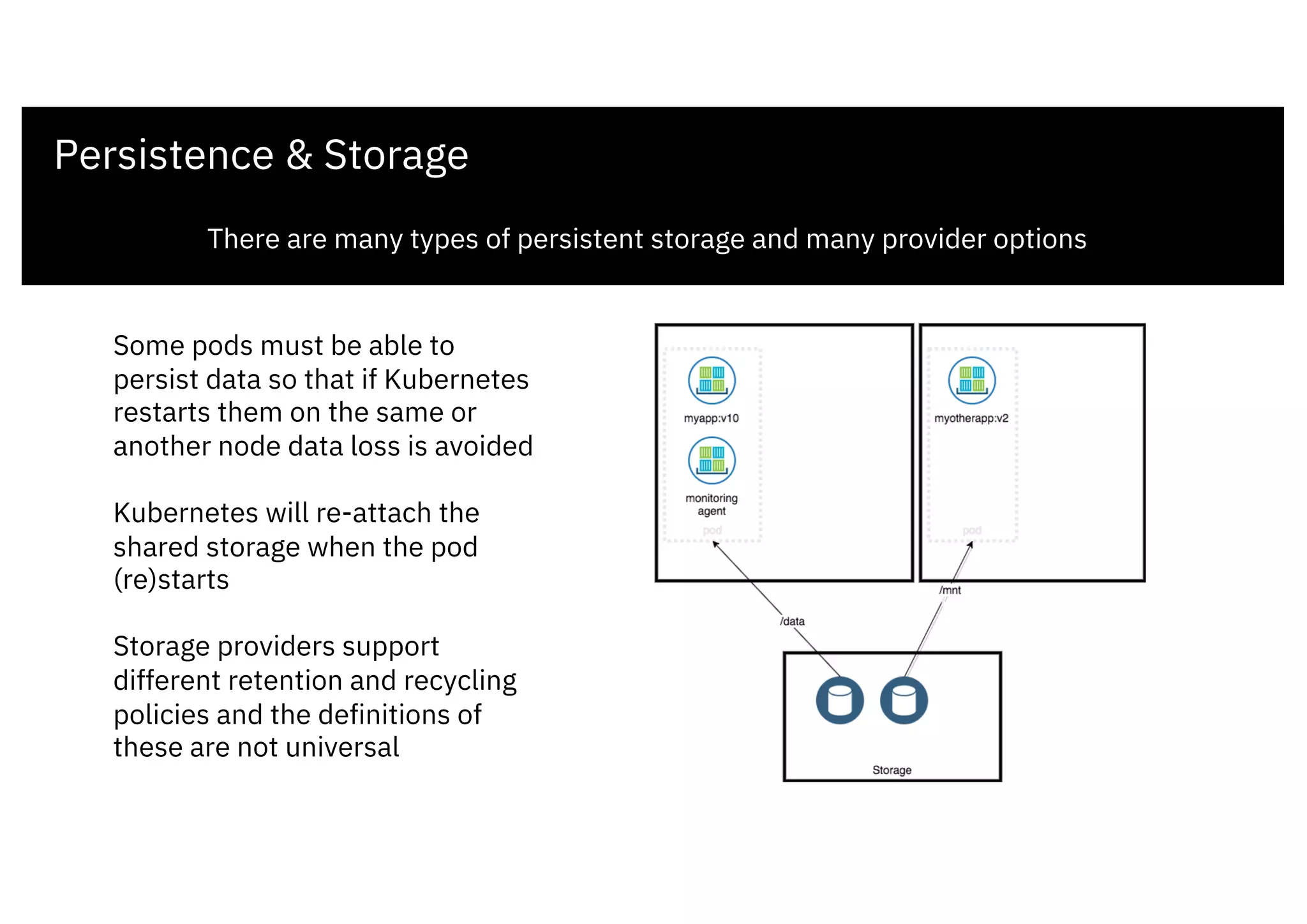

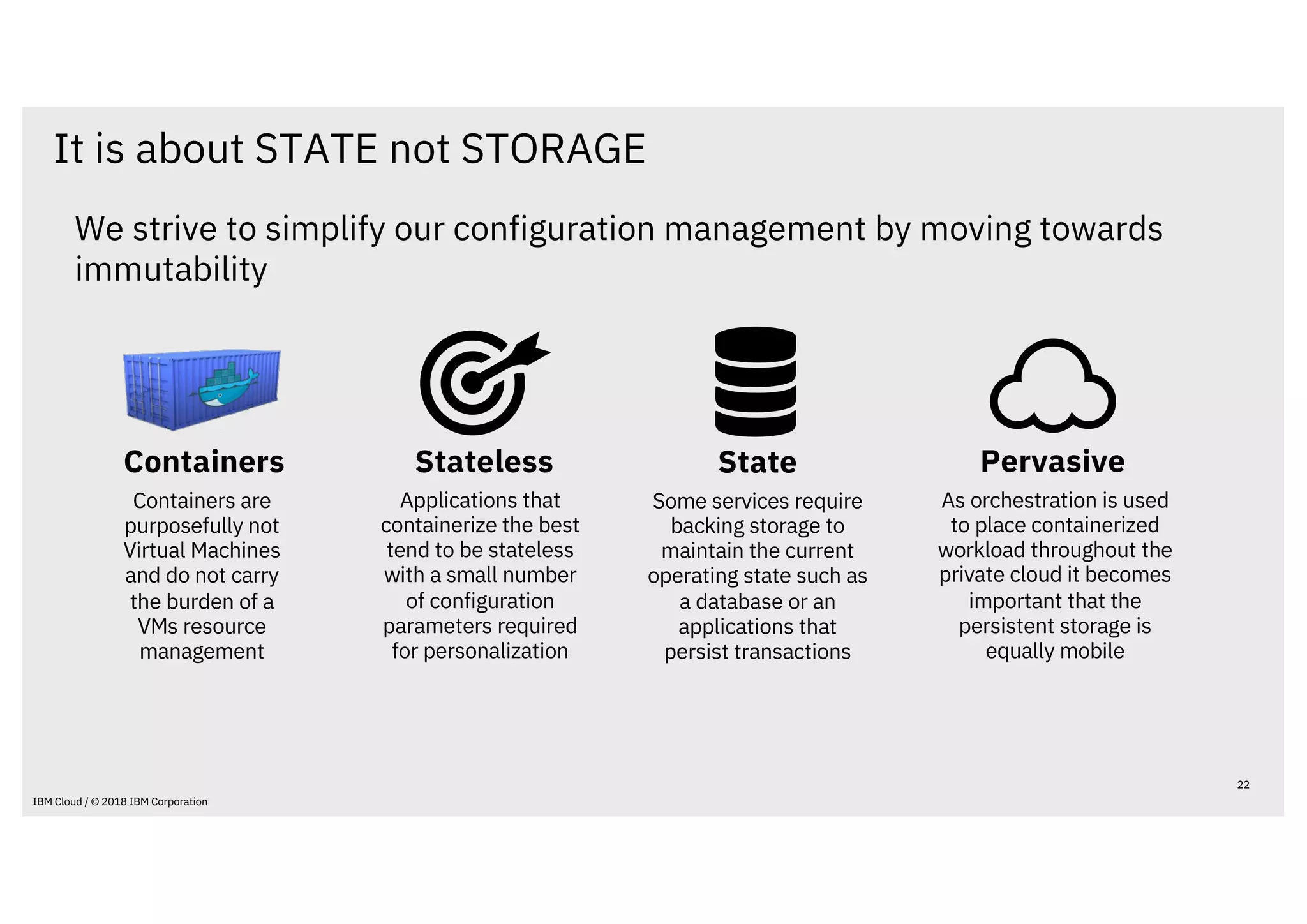
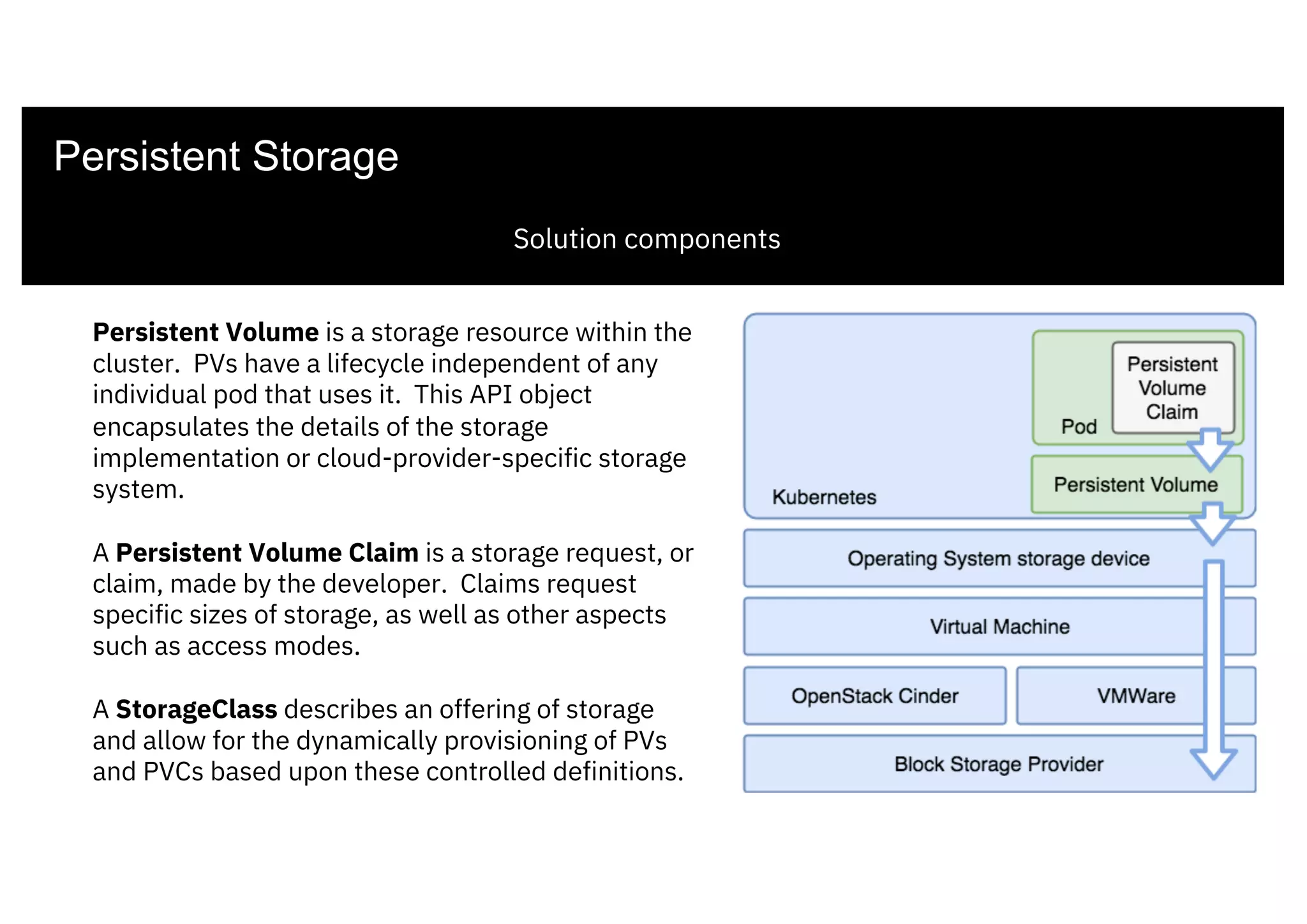

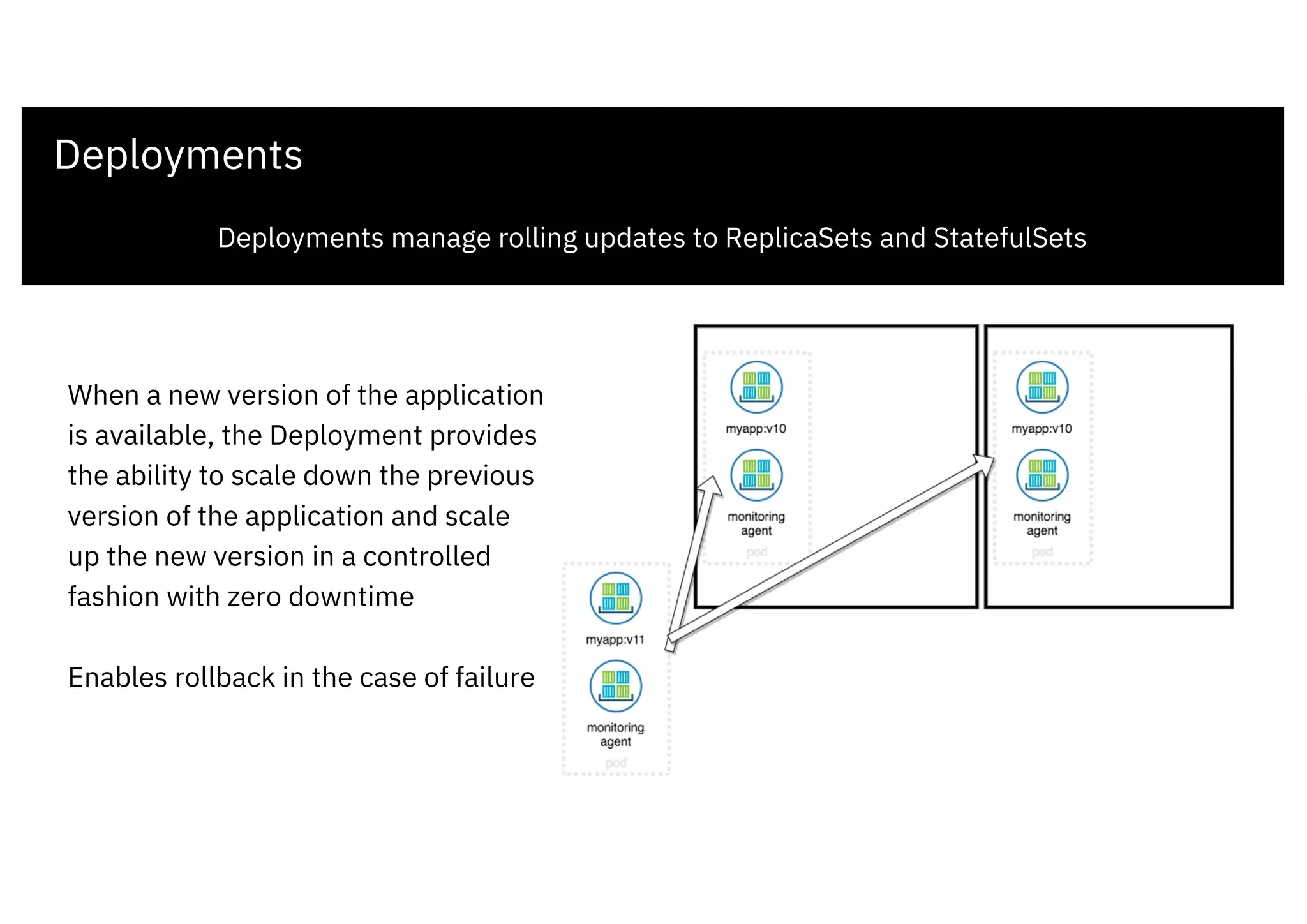
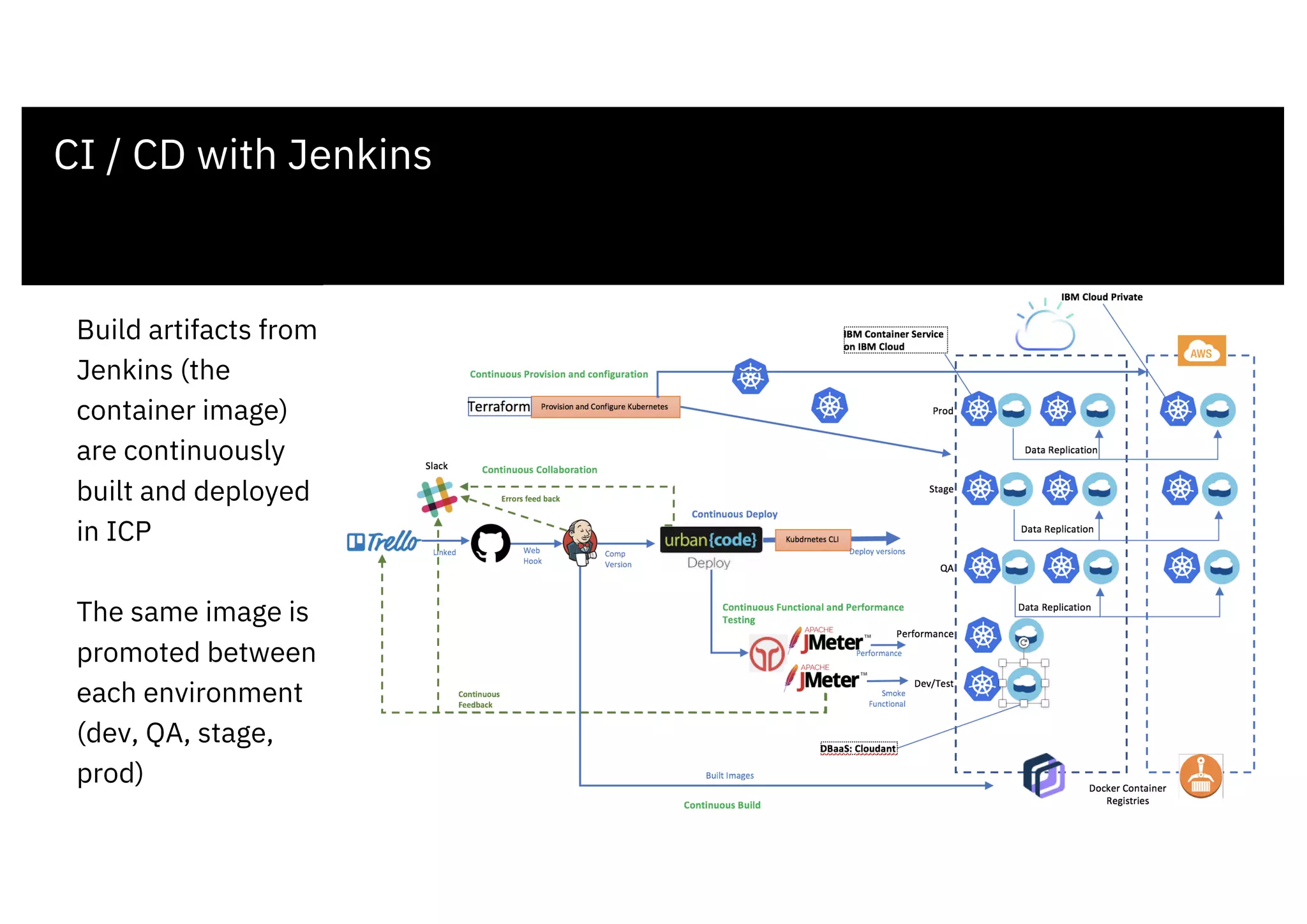

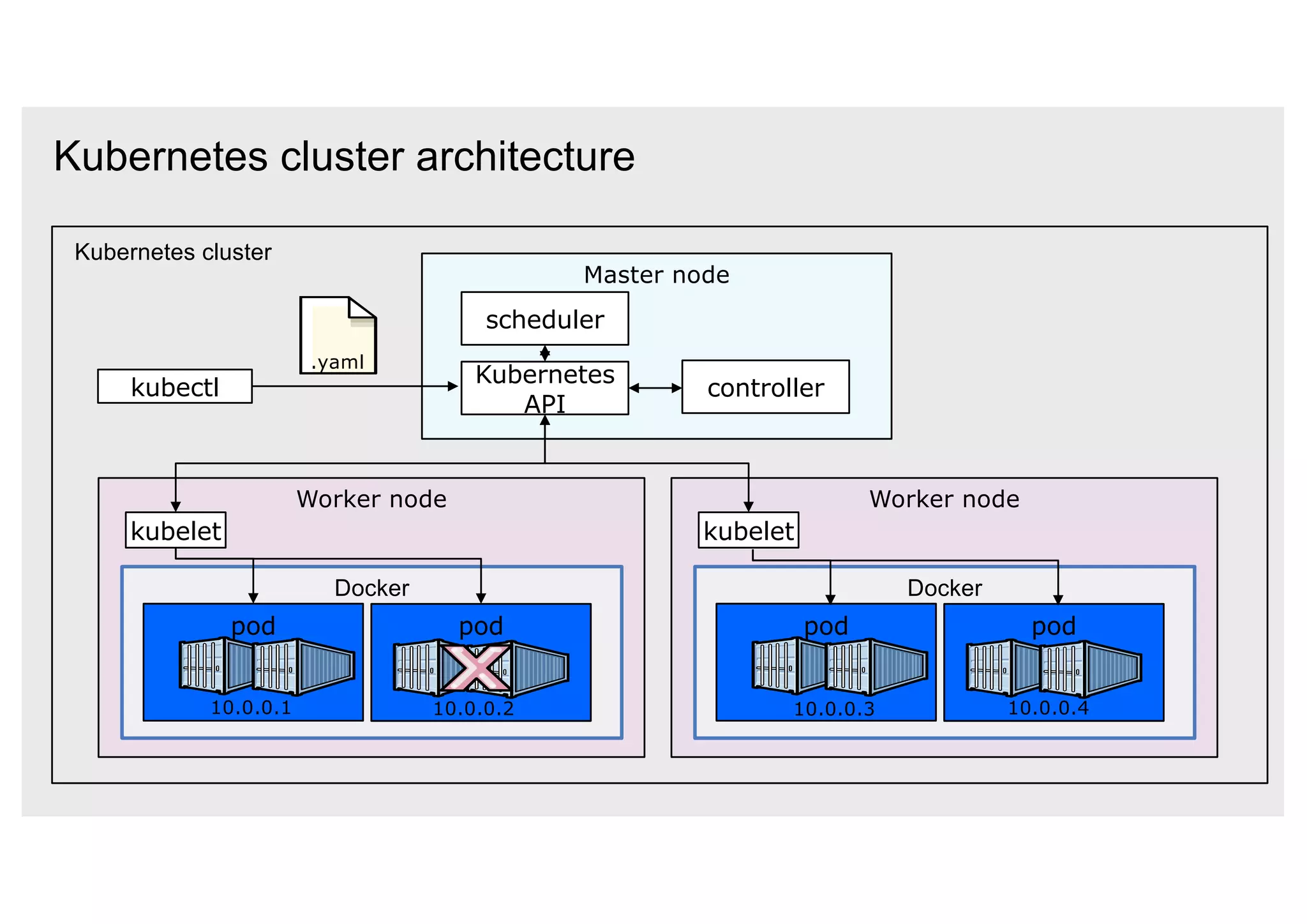
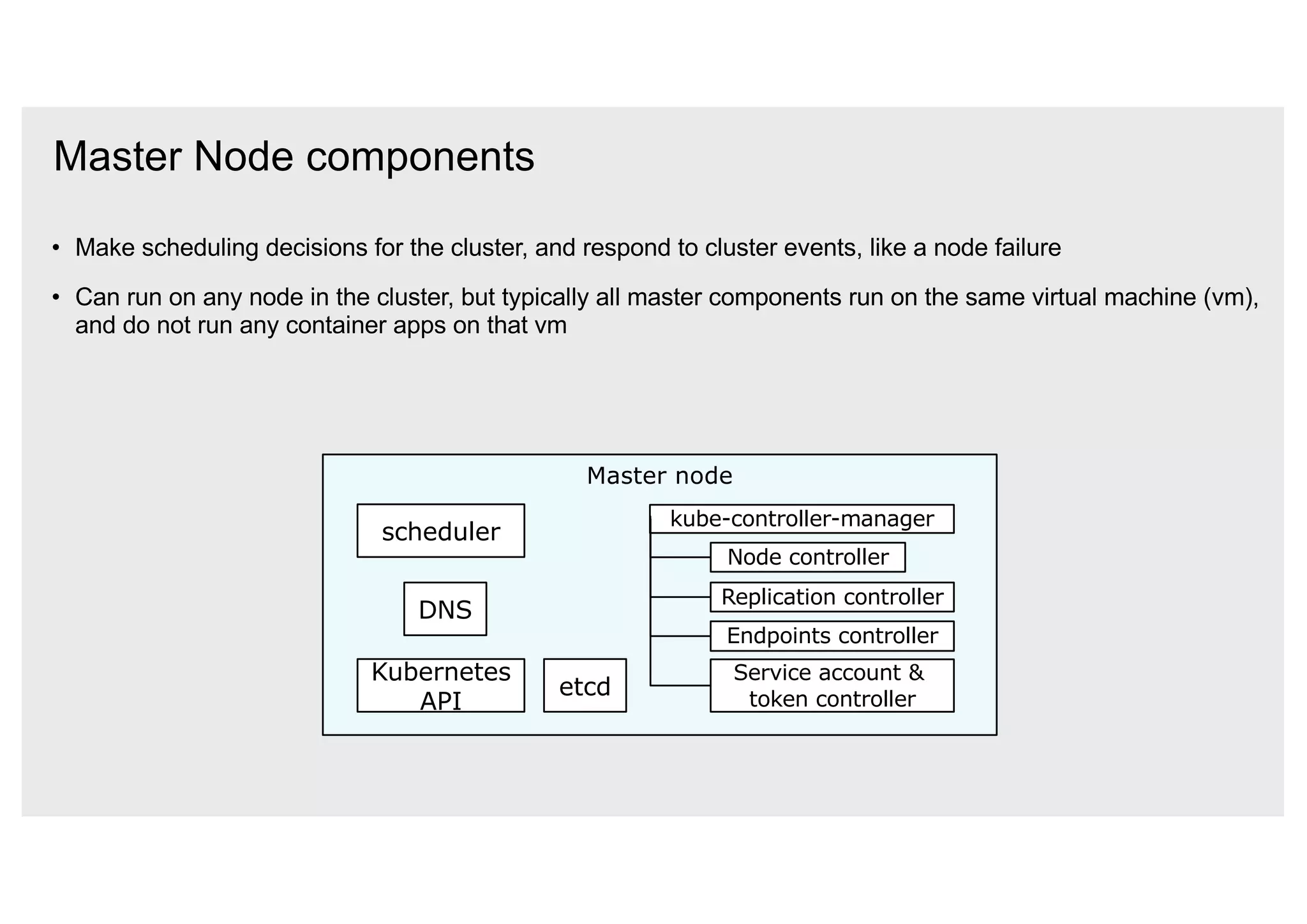
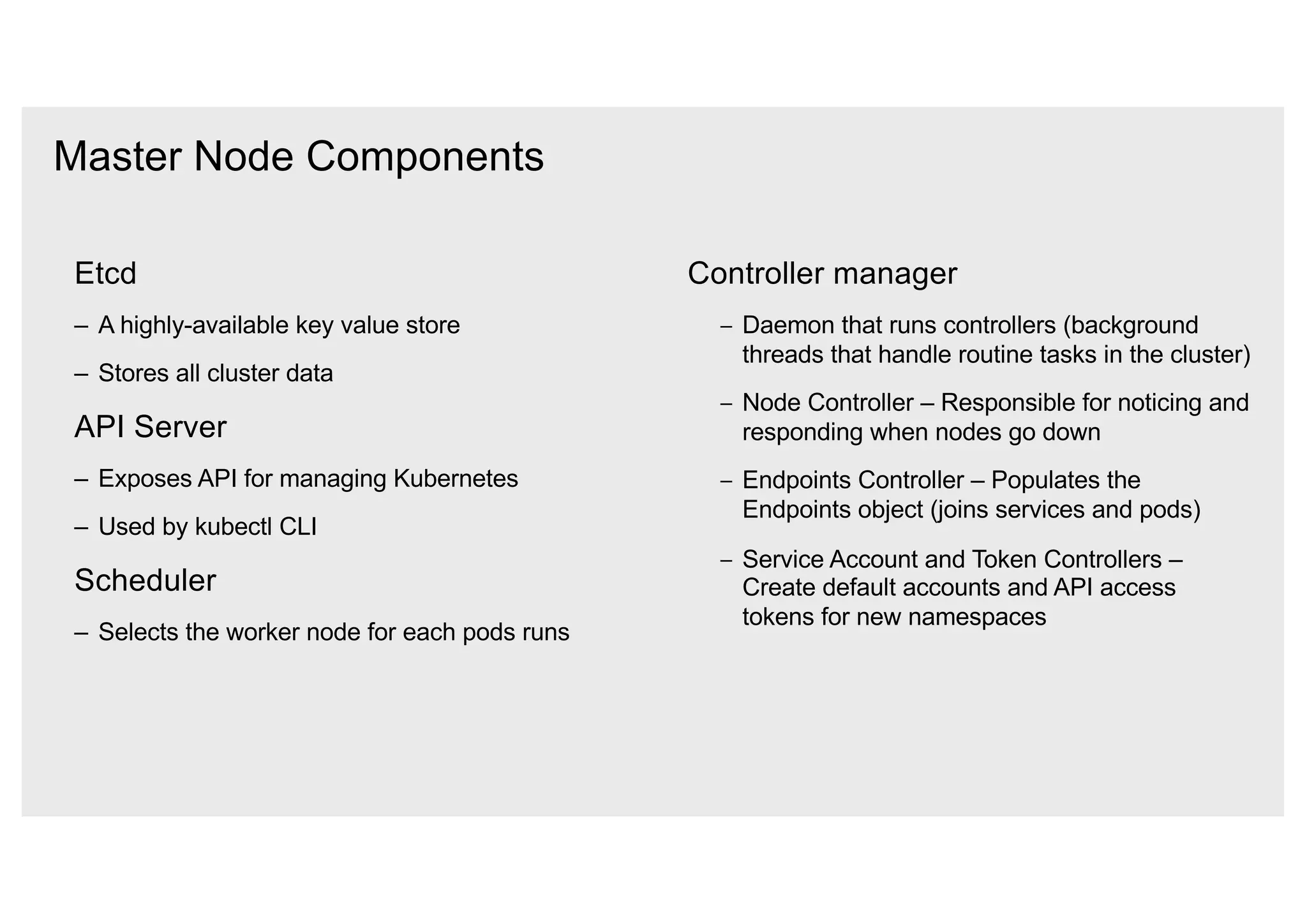

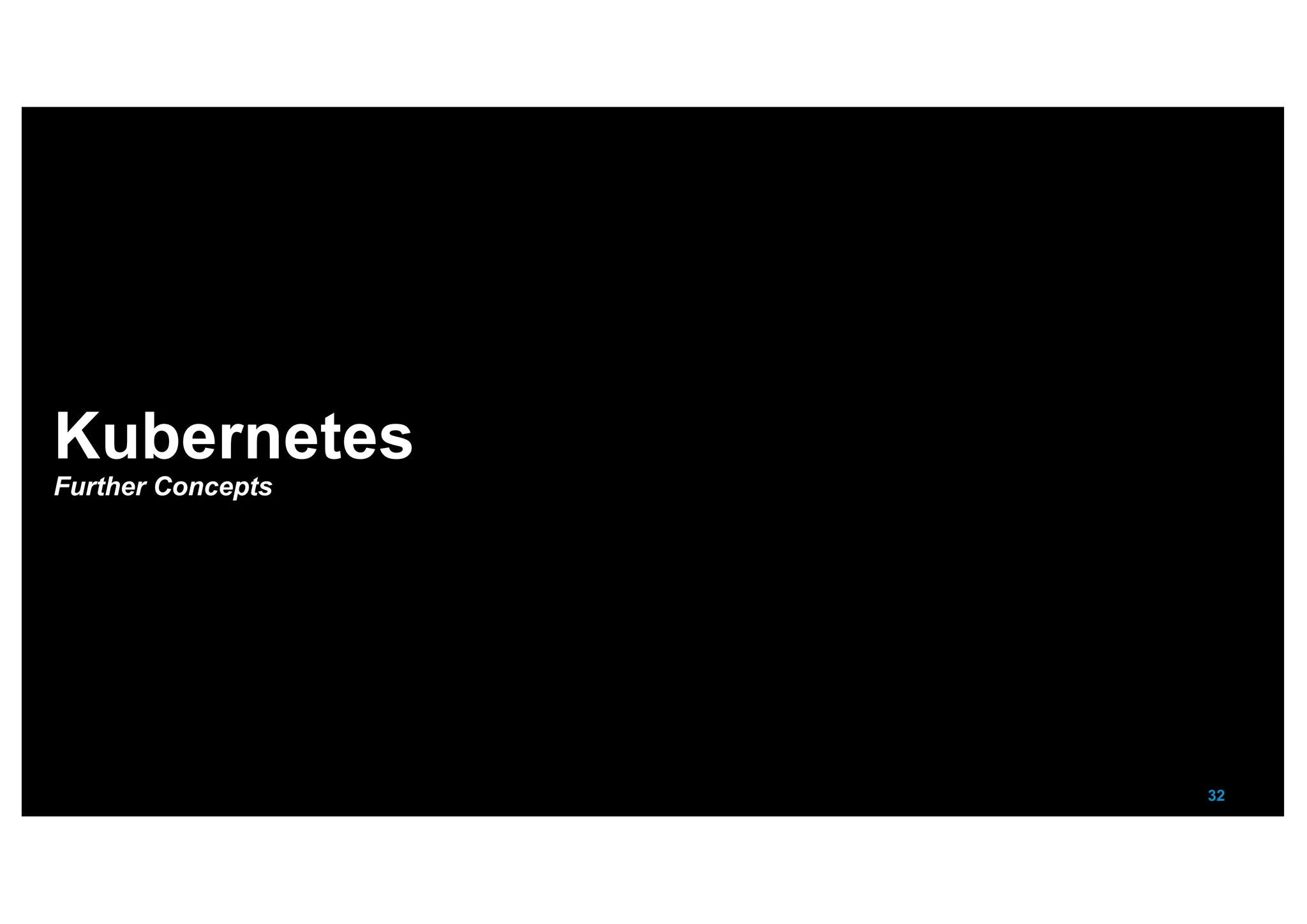
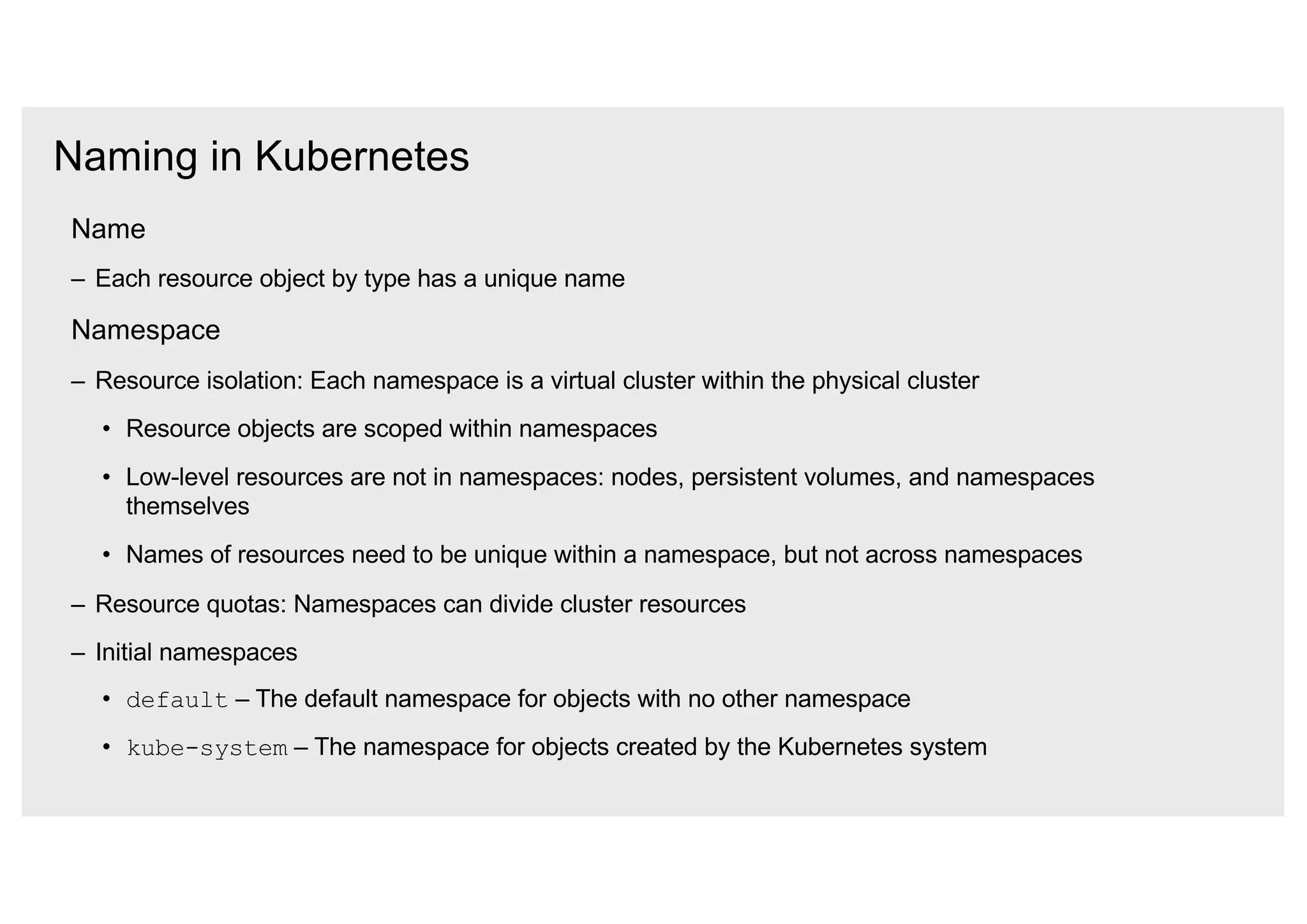
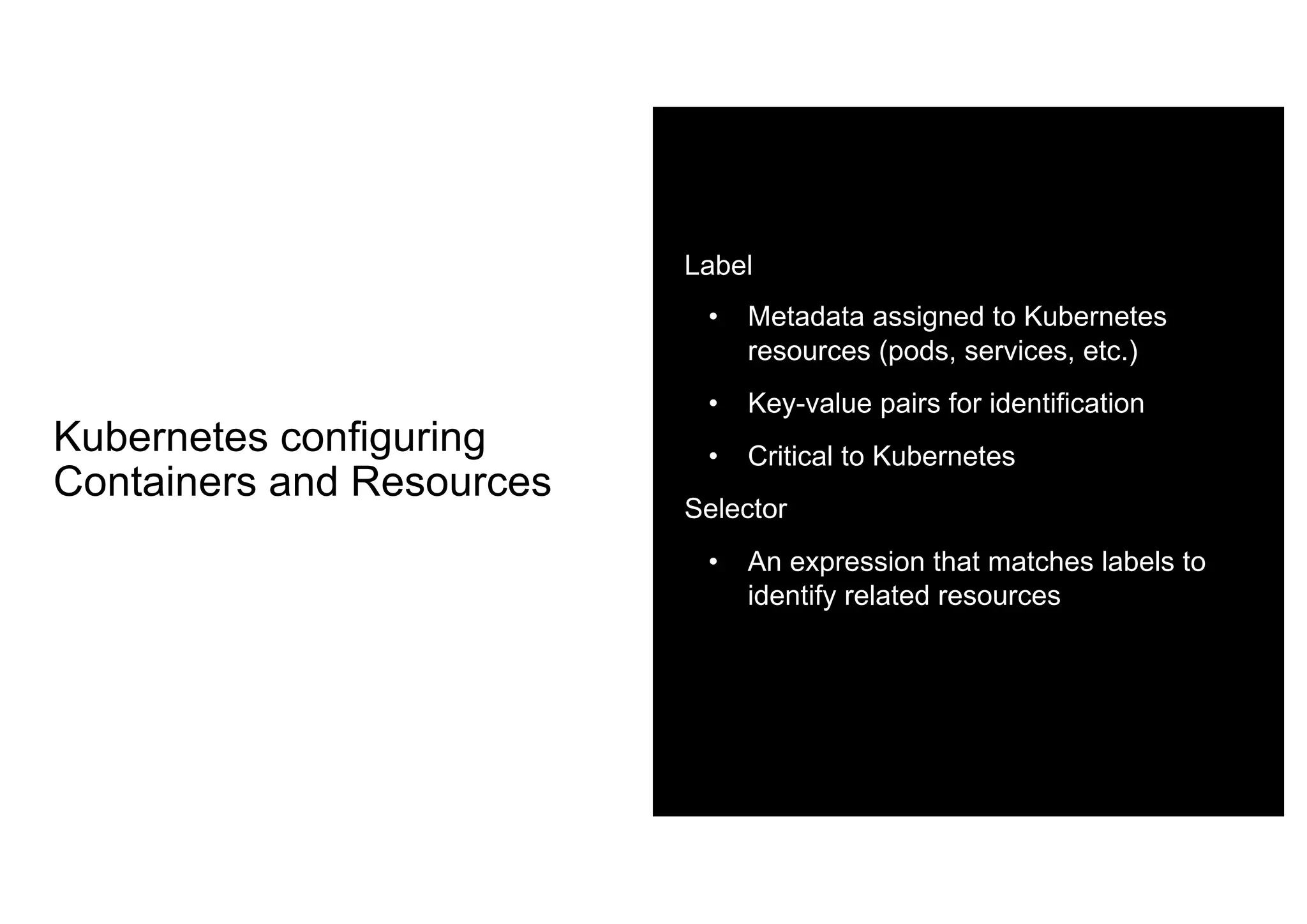
![Kubectl commands Support different approaches to working with Kubernetes objects: • Imperative commands on live objects. • Individual configuration files or directories of files. Important: maintain a consistent approach when working with the same object; do not mix approaches. Basic syntax: <verb> <objecttype> [<subtype>] <instancename> • Where the <verb> is an action such as: create, run, expose, autoscale. • <objecttype> is the object type, such as a service. • Some objects have subtypes. For example, a service has ClusterIP, LoadBalancer, NodePort. • Use the -h flag to find the arguments and flags supported by a subtype • <instancename> specifies the name of the object © Copyright IBM Corporation 2018](https://image.slidesharecdn.com/03-kubernetesbasics-190827025551/75/Kubernetes-Basics-ICP-Workshop-Batch-II-35-2048.jpg)
